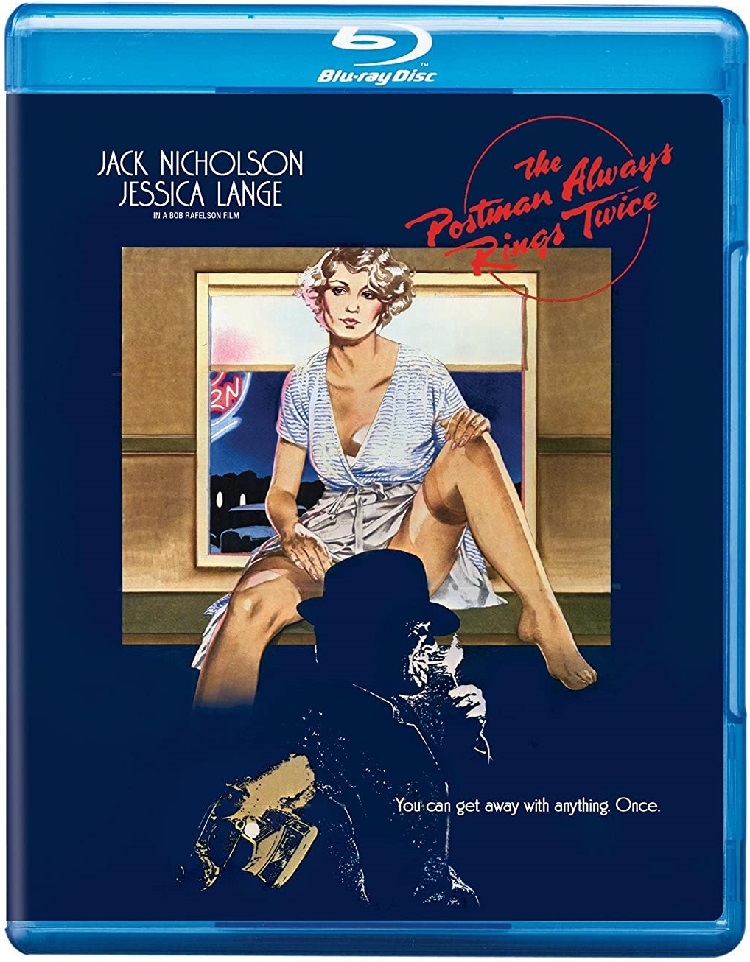
People like to complain these days about the death of Hollywood, about how the studios have no original ideas, and everything is a sequel, a reimagining or a remake. But it seems to me that this has always been the case, at least to some degree. Even the most precursory glance through film history will show you that Hollywood has been adapting and remaking their movies since they started making pictures in the first place.
James M. Cain’s The Postman Always Rings Twice is as good an example as any. Written in 1934, the classic crime noir was adapted into a French film in 1939 and an Italian one in 1943. Three years later, the Americans created the still-definitive version with Lana Turner and John Garfield which is considered a classic of the film-noir genre. It has since been adapted to film another four times including this 1981 American version.
It is easy to see why so many adaptations of The Postman Always Rings Twice have been made. It’s got lust and betrayal, action and murder, a courtroom scene and plenty of drama. One might reasonably argue that the 1946 version is perfect and thus any attempt at a remake is doomed to fail. I won’t argue against that but one of the few drawbacks to that version is that the sadomasochistic qualities and deep sexuality of the book were truncated by the moral standards of the day. By 1981, standards in film were much more relaxed and they were able to fully embrace these aspects of the story. With Jack Nicholson and Jessica Lange in starring roles, Bob Rafelson directing, and a screenplay by David Mamet, the potential for greatness was set.
The film is certainly a lot more sensual than the 1946 version. Nicholson and Lange practically melt the celluloid right off the screen. The now-famous kitchen table sex scene is bursting with fiery passion. Unfortunately, the rest of the film is a bit of a mess. When they aren’t physically entangled, there is very little chemistry between the two leads. Nicholson is a great actor, but here he doesn’t seem to quite understand who the character is and so all we see are the typical Jack Nicholson mannerisms. Lange is much better as Cora, the woman trapped in a loveless marriage and dead-end town. But without Nicholson’s help, we never quite understand why she’s willing to risk everything for him.
It’s all very well made. Rafelson is a talented director and he moves the action along nicely filling, the appropriate scenes with tension and building his story. Sven Nykvist’s photography is beautiful and evocative. Many of the scenes are shot at night and his lighting captures the dark qualities of the story and rich sensuality without ever making it difficult to see what’s going on. It’s a perfectly serviceable erotic thriller and had it been an original story, I might rate it a bit higher, but as it is I can’t help but compare it to the 1934 version which is far superior.
The video is presented in 1080p with an AVC codec. For the most part, it looks good with great black levels and contrast, which must have been difficult given the naturalistic cinematography focusing on dark moods. There is periodically some noticeable compression. Oddly the scene-specific audio commentary track was not added as a simple new language track but instead was inserted as a second copy of the film (minus the scenes without commentary.) This caused the actual film to be compressed more than necessary and it shows. It’s nothing terrible and unless you are watching the film on a really big screen, you’ll probably not notice it, but it’s a shame they created the disks this way anyways. Especially considering the terrible response the DVD version got several years ago upon its release (even more strange is that it was only released in Pan and Scan so this Blu-ray release is the first time its been seen letterboxed on home video.)
The audio sounds great with a good dynamic range and clear dialog. The score likewise is clear and well balanced.
Extras are sparse with just the scene-specific commentary by Bob Rafelson, David Mamet, and Jack Nicholson, and a theatrical trailer available. The commentary is interesting and informative. The three were recorded separately and so they do not interact. Rafelson does most of the talking with Nicholson chiming in here and there and Mamet’s comments being as sparse as his terse as his writing.
James M. Cain’s story obviously has something special about it that makes people keep adapting it to film. While this version doesn’t come close to the quality of the 1946 version there is enough to like about it to add it to your collection. The Blu-ray has its flaws, but this is likely the best version we’re ever going to see of it.